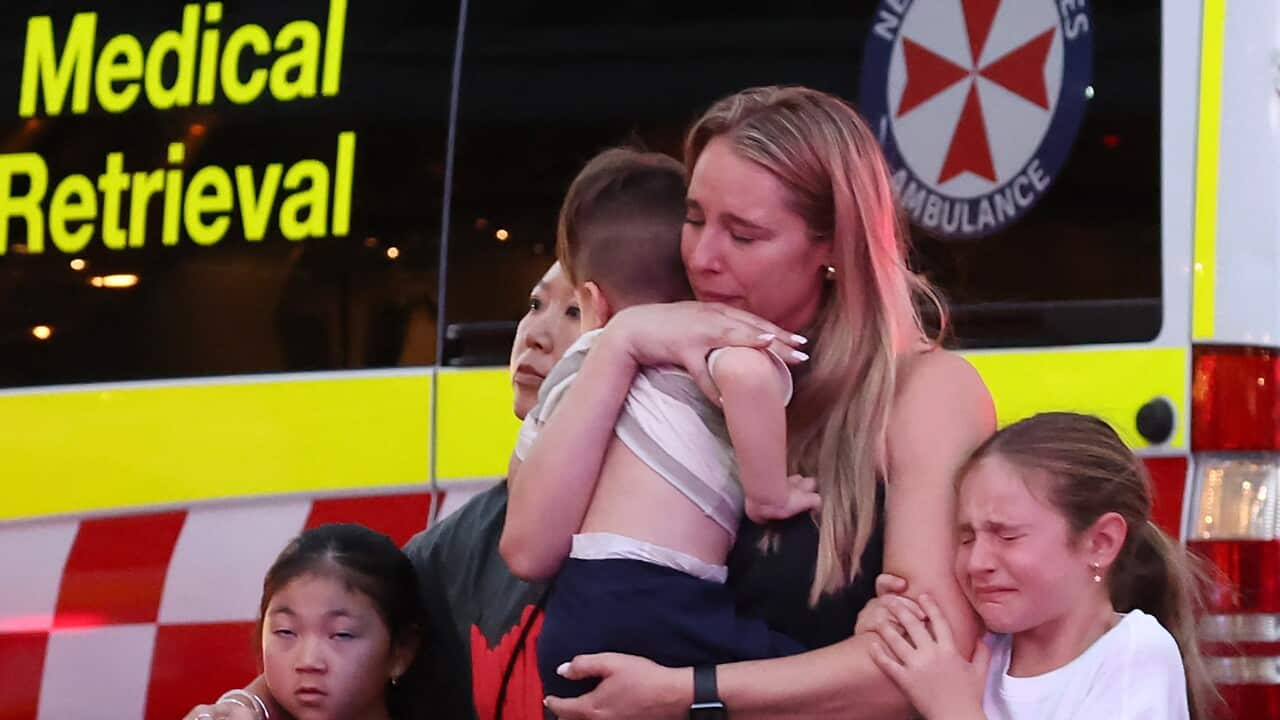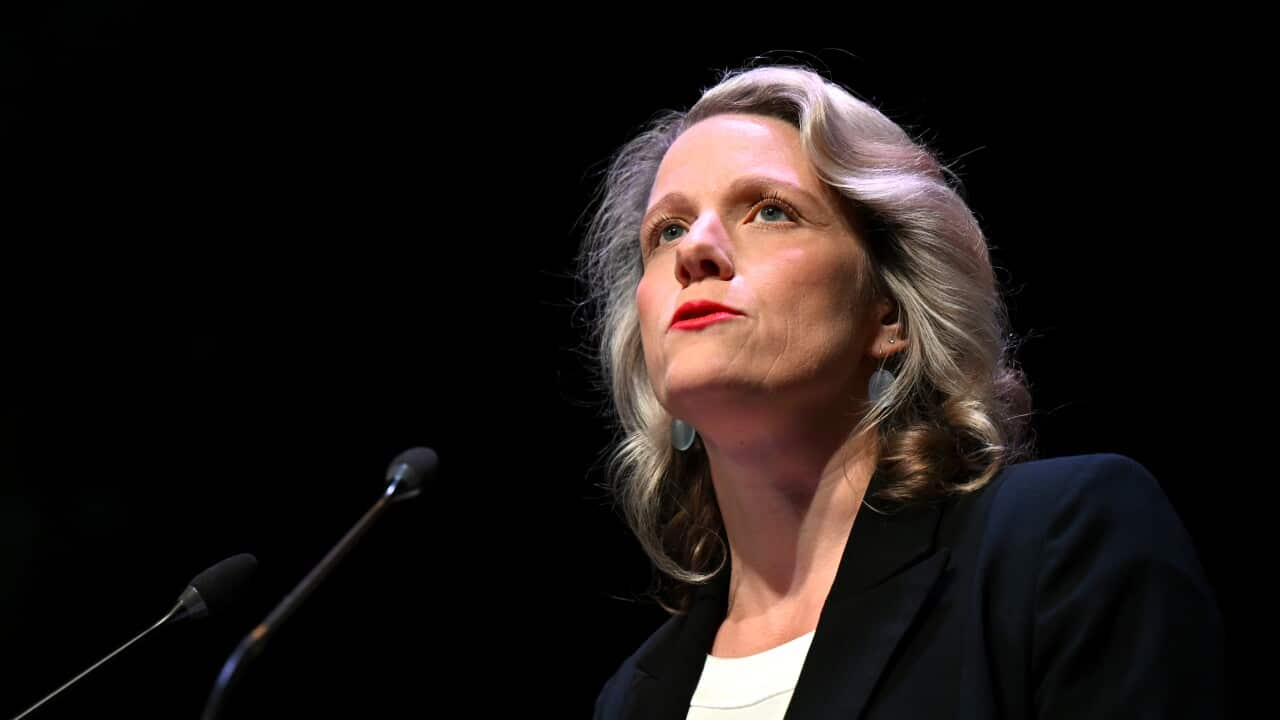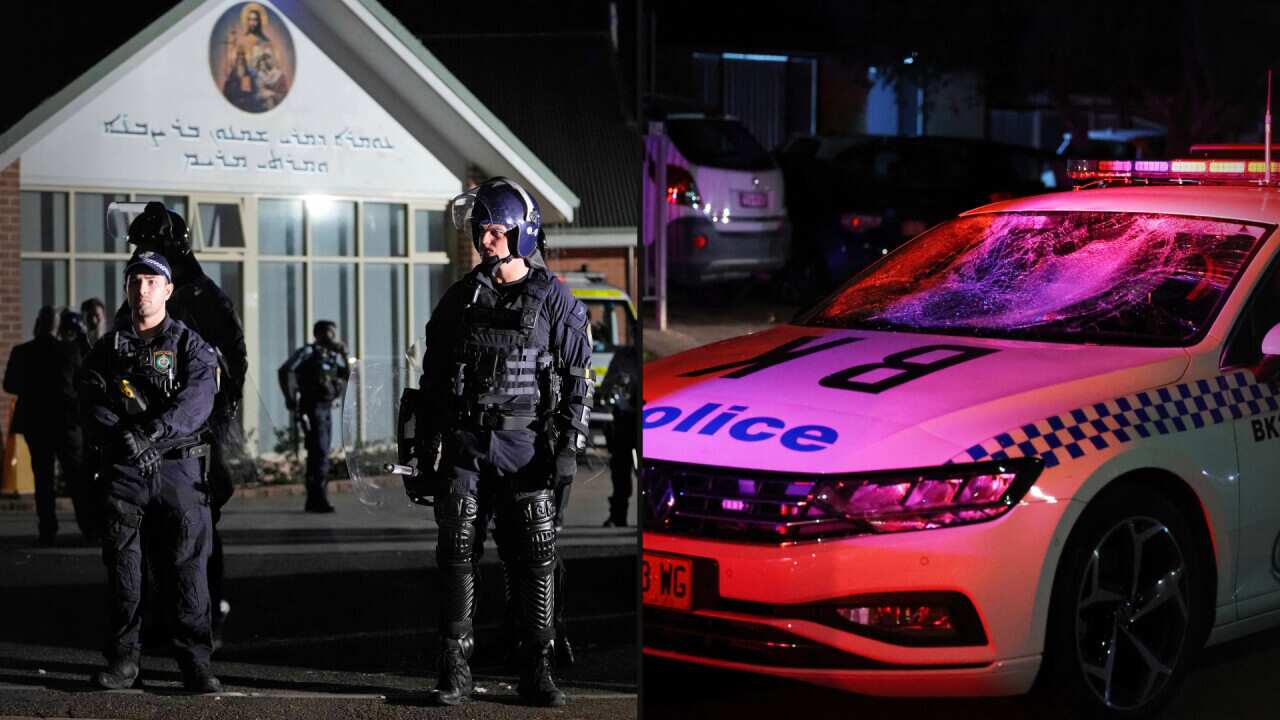Ron Shepheard was only in his early 20s when he arrived in the Japanese city of Hiroshima.
Months before, on 6 August 1945, it had been destroyed by the world’s first atomic bomb.
The US bomb - known as “Little Boy” - killed about 80,000 people and left tens of thousands more grievously injured and maimed.
Ron was part of the Australian forces who would occupy a defeated Japan following the bombing and Japan’s surrender just over a week later.
Now 95, he is one of the last living Australians to have witnessed the devastation following a nuclear attack and says despite the victory, he never wants anyone experience what he did. “It’s a horrible thing. I think it’s very bad, I really do,” he tells SBS News from his respite centre in northern New South Wales.
“It’s a horrible thing. I think it’s very bad, I really do,” he tells SBS News from his respite centre in northern New South Wales.

The first day in uniform for 18-year-old Ron Sheapheard VX 146501. Source: Supplied Ron Shepheard
“It was amazing when we got there; ‘wow, wow’,” he says of his first days after fighting the Japanese in the jungles of south-east Asia, “but you wouldn’t want to be there yourself when you get something this big. It’s crazy.”
Private Shepheard enlisted in Melbourne in 1943 and trained as a sharpshooter. Less than a year later, aged 19, he landed on the beaches and fought in Morotai, in what was then the Dutch East Indies, now Indonesia.
As a part of US general Douglas MacArthur’s push to retake the Philippines, he went on to fight in Tarakan, and in July 1945 he landed as part of the Allied invasion of Balikpapan.
He was still in combat there when the bomb was dropped on Hiroshima, and Nagasaki three days later, killing another 40,000 people. But there was no time for a party.
“No, we were very busy, we were in the army and at a bad place, and were getting ready to go to another place where the Japanese were”, he says.
“At the time I thought [Hiroshima] was marvellous because we were dying, we were getting killed and everything else, so we killed them.”
“You look at your boys, there were thousands of our own mates getting killed.” After the Japanese surrender, a call went out for volunteers to go to Japan as part of the British Commonwealth Occupying Forces (BCOF).
After the Japanese surrender, a call went out for volunteers to go to Japan as part of the British Commonwealth Occupying Forces (BCOF).

Hiroshima's Atomic Dome. Source: Australian War Memorial
“We were just young, we were just happy to do the work,” Ron says.
He was with the first contingent of Australian soldiers to arrive in Japan in February 1946, and on landing in the port of Kure, went the same day to Hiroshima.
Even months after the bomb, the devastation was confronting.
“We went that first day. Right there, and that’s where we lived. It was bloody terrible, there was nothing there,” he says.
“It was very bad, we didn’t expect it that bad, but it was really big, you know? We got the shock of our lives.” There had been some limited media reports about the atomic attacks and aftermath in Hiroshima and Nagasaki but the US and Allies downplayed the horrors.
There had been some limited media reports about the atomic attacks and aftermath in Hiroshima and Nagasaki but the US and Allies downplayed the horrors.

Japanese civilians suffering from burns and radiation sickness as a result of the dropping of the atomic bomb on Hiroshima. Source: Australian War Memorial
The soldiers had no idea what they were going into and weren't prepared for their first interactions with the locals.
“We didn’t know anything, it was unbelievable that so many [Japanese] were still alive, most were dead and half done, thousands of them. It was very bad,” he says.
“They were still human, we didn’t like them but the poor buggers, they got hurt hard.
“They looked at us, we looked at them, they were very shocked, they were right in front of us, all manner of people standing there, they didn’t know who we were, they didn’t know what we were like.
“We couldn’t talk to them, they couldn’t talk to us. We felt sorry for them, they had nothing.” The soldiers also had no briefing on radiation and were not given any personal protective equipment.
The soldiers also had no briefing on radiation and were not given any personal protective equipment.

Ron Shepheard (right) with two US soldiers and Japanese cooks in Hiroshima in 1946. Source: Ron Shepheard (Supplied)
For two years Ron would be stationed at Hiroshima and accommodated not far from ground zero. His job was to help secure and patrol the city, search properties door-to-door and those occupying them, and ensure there were no weapons.
“We were stupid enough to walk around in amongst it [the radiation] and looking at it all the time. It was mad, there was nothing there really,” he says.
Off-duty they would explore the city, including the Hiroshima Prefectural Industrial Promotion Hall, a landmark now commonly called the Genbaku Dome or Atomic Bomb Dome, which was just a few hundred metres from ground zero.
“We were walking around there a lot, we didn’t know any different, we were stupid ... we shouldn’t have been there at all, but we done it,” he says.
During his deployment, he was also sent to Tokyo and the royal palace, where one day he spotted Japan’s wartime emperor Hirohito.
“Yes, we saw him, bloody stupid and [should be] bloody dead,” he says, recalling his feelings at the time. Ron would be based in Japan for five years and would witness the country slowly rebuild and re-emerge economically.
Ron would be based in Japan for five years and would witness the country slowly rebuild and re-emerge economically.

Veteran Ron Shepheard with his medals from his service in WW2, Japan and Korea. Source: Stefan Armbruster/SBS News
Despite orders, many of his Australian comrades would go on to marry Japanese women and some would not return home.
For Ron, Japan would become the place where he would pick up his life-long love of cycling.
Unlike many of the 20,000 Australians who served in BCOF, Ron received a service pension because of his combat duty during the war and later when he volunteered to fight in Korea.
He would go on to settle in Murwillumbah, NSW.
He did not develop any sicknesses in later life, unlike many of his contemporaries who blame it on radiation poisoning.
“I was very lucky, I don’t know why I’m alive,” he says.
“I thought it was hard, and everything else, but the one good thing about it is at least we won.”










